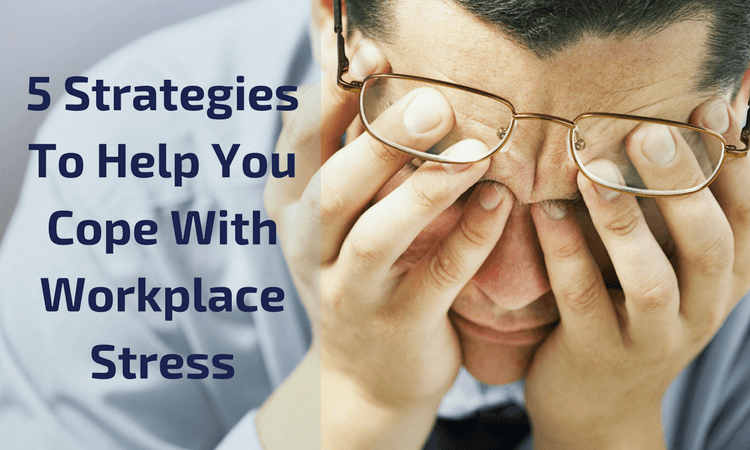You’ve probably heard about mindfulness lately. The practice itself has been around for thousands of years, practiced by Buddhist monks, Jesus, the Mayans, and pretty much every religion ever created, though many different terms have been used to describe it. It has become a staple for religious and spiritual growth all over the world. The fact that millions of people and many different religions all came independently to regard mindfulness as the path to enlightenment says something for its efficacy.
Mindfulness brings with it a host of benefits, but it can take a lot of hard work. For example, mindfulness can rid you of anxiety and help you cope with loss, balance your mood, improve your focus and creativity, and find motivation. Becoming this proficient in mindfulness, however, will take serious dedication.
How do I become mindful?
Explaining mindfulness isn’t the easiest thing to do. You know how ancient Chinese martial arts masters used metaphors to instruct their students? (“You must be like water,” as Bruce Lee liked to say.) That’s because we’re dealing with intangible stuff here. You can’t quantify a mindful state or explain to someone how to get there with directions.
Mindfulness is a bit of a misnomer. Some spiritual guides prefer the term “no-mind,” because one of the main goals of mindfulness is to quiet the relentless racket that most people carry around in their minds. This racket is, in essence, an unrestricted form of your internal monologue. It’s also a huge source of anxiety, and once you can recognize it for what it is, you can work to eliminate your anxiety issues.
Of course, you rarely recognize this. When you finally do realize that your unconscious mind has been blaring nonstop for years, you’ll wonder how it ever managed to become background noise. For now, though, it’s just that – background noise. People usually can’t even recognize these unconscious thoughts until they’re gone – in their absence, the ensuing silence seems much louder.
How can you turn off this anxiety-fueling background noise?
It’s a good idea to conjure up some memories of times when you were fully conscious and mindful. This has happened, by the way – lots. Mindfulness is our natural state of being. It’s not something you have to strive for, really – it’s more like you have to shed layers of conditioning that have barred you from your natural state of mind.
- If you’ve ever sat on a beach and watched a beautiful sunset ignite the sky with a flaming gradient while seagulls spun patterns between you and the clouds, you may have noticed that you were entirely captivated by the natural beauty. There were no words or thoughts that came to mind – the scene simply was what it was, and you were a part of it, present and appreciating it.
- Another example of mindfulness occurs when you’re completely engrossed in a hobby or an activity. If you’ve ever played a wicked guitar solo, that crystal-clear state of focus is mindfulness. If you’ve ever been in love and found you and your partner staring into each other’s eyes without speaking or thinking, that’s mindfulness.
The goal of mindfulness is not to stop yourself from thinking. It’s to free yourself from the incessant mindless thought patterns that consume our waking lives. Getting rid of these allows you an entirely new level of focus and awareness.
The all-encompassing awareness of mindfulness is of such clarity that anxiety and stress will dissolve when confronted by it. A lot of anxiety is fueled by that nagging voice in the back of our head telling us what could go wrong, what people are thinking, why we should be embarrassed. Silence that voice and the irrational anxiety will disappear, and you can actually dedicate some conscious thought to understanding the root causes of your anxieties. If you want. Or you could just keep practising mindfulness so you don’t have to worry about that.

Training yourself to be mindful
There are many ways to train yourself to be mindful. The first activity you should do allows you to prove to yourself that you can, indeed, instigate a state of mindfulness – if only for a moment. Eckhart Tolle, author of The Power of Now, wrote about this technique. The five seconds I spent on the exercise didn’t quite blow my mind at the time, but it snowballed, and I recognize now that that moment was the catalyst that improved every second of every day of my life since then.
Try this. Right now. It’ll only take a second. Ask yourself: “What will my next thought be?”
Do it. Don’t read any further. Ask yourself what your next thought will be, then wait for a moment to hear the answer.
Done?
Do it again, just in case. Note the pause in between asking the question and receiving an answer.
Done? You’re sure? Great.
OK, so your next thought doesn’t matter. Forget about it. The point of this exercise is to allow you to experience the gap in between the two thoughts. This is the no-mind, the mindful awareness. Asking yourself what you think your next thought will be shows that you have intention. The moment in between is pure conscious awareness. This is the essence of mindfulness, of Buddhist enlightenment, of “the Light of the Christian God.”
This mindstate allows you to maximize your productivity, creativity, and focus. That was just a taste, though – by now, almost surely the noise in your head is trying to make itself heard again. Don’t let this bother you. You managed to beat the noise, even if it was just for a second!
Now you just need to work towards making that your general state of being. This takes a lot of practice, but fortunately, you can practice mindfulness at any time.
- When you’re walking, stop and check yourself every few minutes. Observe your unconscious thoughts. Observe them, but don’t push them away – this actually makes them stronger. If you are mindful, no thought will stick for more than a second unless you want it to.
- To get rid of these unconscious thoughts, focus on something – or everything. If there’s no breeze, feel the air against your face as you walk through it. Feel the bottoms of your shoes hit the pavement. Enjoy the feeling of the fabric of your clothes rubbing against your skin. Listen to the sounds of nature. There’s always enough to focus on to draw yourself away from your internal racket.
- Don’t do this with the intention of merely getting rid of unconscious thoughts. Focus and be present for the sake of enjoying the moment. Trust me, the thoughts will disappear much more easily when you’re not trying to block them out.
- Whenever you do something – anything – give it your complete focus. Brushing your teeth? Feel the contours of each tooth as you brush them, one by one. Washing dishes? Don’t rush through them – that’s that internal racket again, telling you that you have better things to do, places to be. Feel the warm water and the soap as you scrub your dishes. If you’re truly mindful, you don’t mind washing them at all.
- This is often how I check myself – if I’m grumbling about some chore I don’t want to do, I’ll immediately realize that I’m not being mindful.
These are just two examples. You can come up with your own – just focus on the present moment. Engage your senses and quieten your internal dialogue. If you need to think, do so – but only allow beneficial thoughts into your mind and devote your entire consciousness to them.
This is particularly useful for dealing with anxiety. Instead of falling victim to an unconscious whirlwind of negative thought patterns, you can calmly assess the situation. “I am anxious because I am worried that these people are judging me.” Consciously acknowledging this instead of letting the thoughts take control of you will strike down a good part of your anxiety and let you regain control of your situation. The thoughts that spurred your anxiety will pop and disappear just like any other unconscious thoughts.
Keep in mind that this takes a while to become comfortable with. When I first started fighting anxiety with mindfulness, I’d feel like I was on the verge of a panic attack. As you become more proficient, it will get easier.
In conclusion
Mindfulness is quite possibly the most powerful non-medicinal remedy for anxiety. Chances are, you’ve already used it to some degree in an effort to fight anxiety. If you’ve ever taken deep breaths to stave off a panic attack, that’s the same thing – you become mindful of your breath instead of your thoughts.
Now that you know this, you should make it a daily practice to be mindful. It doesn’t really take any extra time, and you can do it anywhere. Every time you catch yourself not fully engrossed in whatever you’re doing, try one of the exercises above. It’s much easier to fall back into the old pattern of recycled thought than it is to be mindful, so don’t beat yourself up. Just keep trying. After a few months, any time you catch yourself becoming anxious, you will literally have an “off” switch that you can flip to eliminate the feeling.



